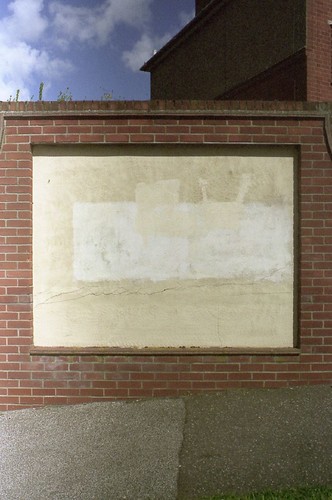My wife and I were trying to take a picture of both of us together in a sort of co-MySpace fashion: I held the camera out in front of us and she pressed the button. It took a few tries before we got what we wanted, and when we did, we both credited me with it. Which, upon further reflection, really surprises me.
I’ve always considered the photographer or author of a picture the person who pressed the shutter button to make it. Sure, the line can blur a bit with commercial photography or motion pictures, where the final image is the result of large-scale collaboration between art directors, set designers, models, makeup artists, wardrobe consultants, grips, etc., but I don’t shoot like that, so it’s always been fairly clear-cut for me.
It seems that when you get down to actually making the exposure, there are two decisions to be made: where to put the camera, and when to press the button. There are certainly other decisions—lens, film, focus, shutter speed, aperture, etc.—but most or all of those have already been made, or are made for you by automation, before the button is pressed. (We had already selected a Polaroid SLR 680, which has a fixed lens, only takes one kind of film, is auto exposure-only, and we chose to use the auto focus.) Granted, the messed up shots before the keeper were messed up because I aimed the camera badly, not because she hit the shutter at the wrong time, but it seems strange that we both considered it "my" photograph instead of "ours", when we were each responsible for half of the decision-making.
